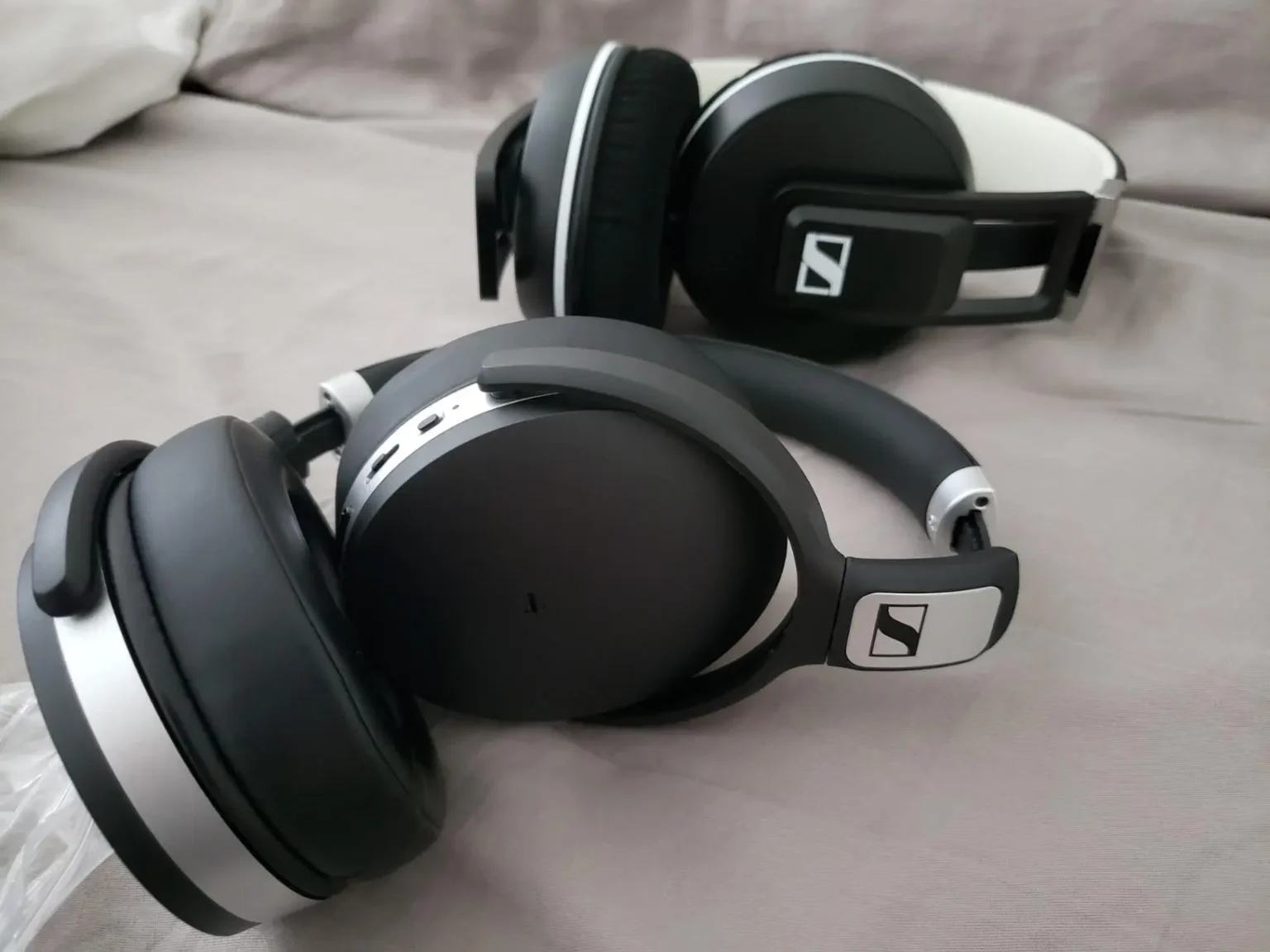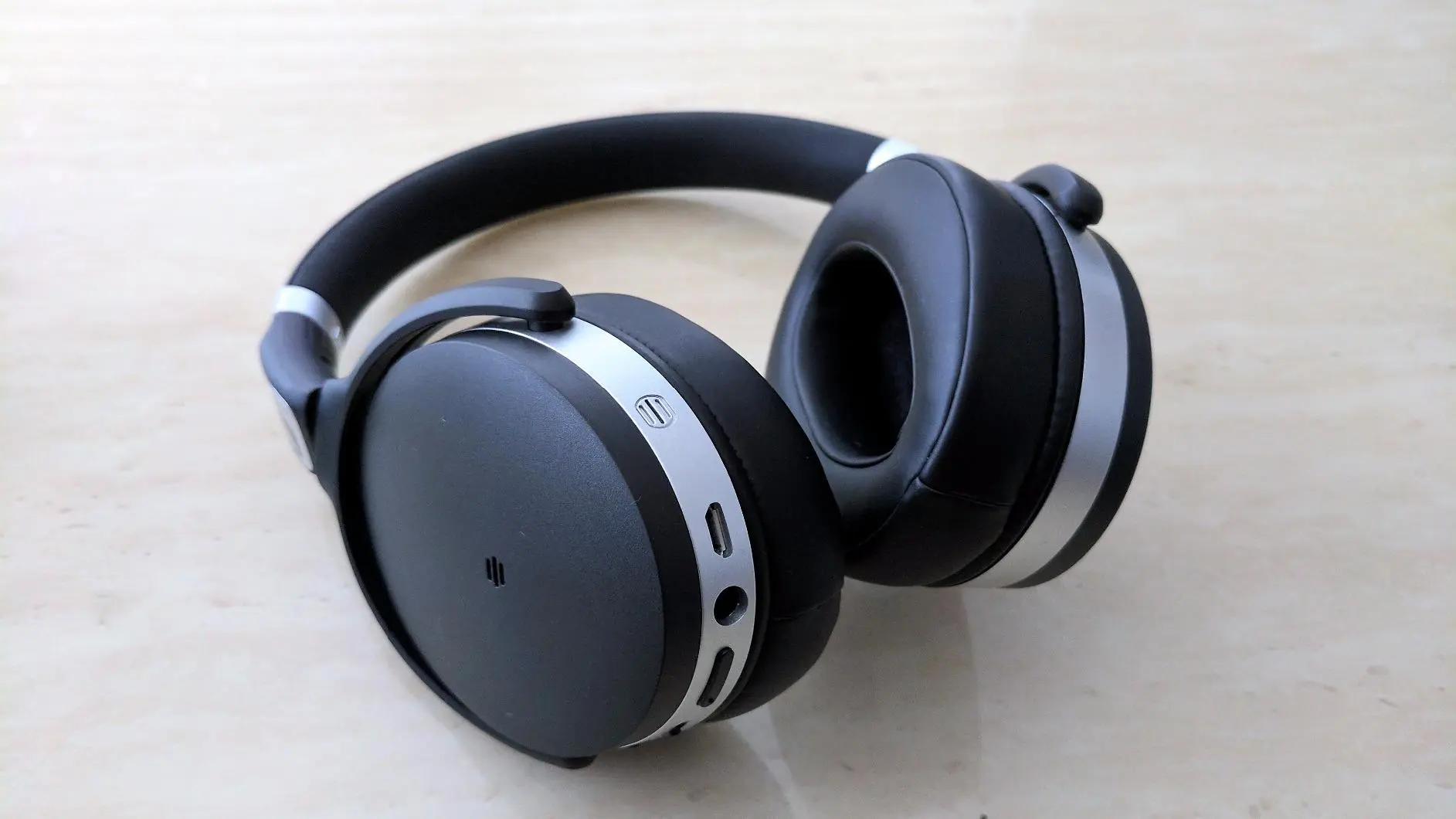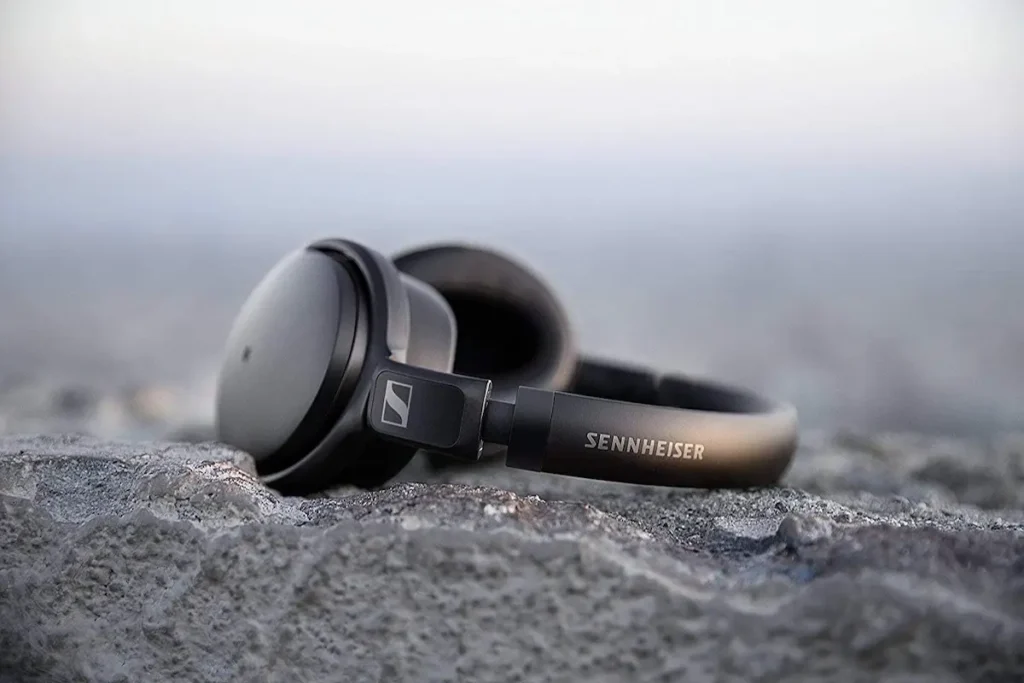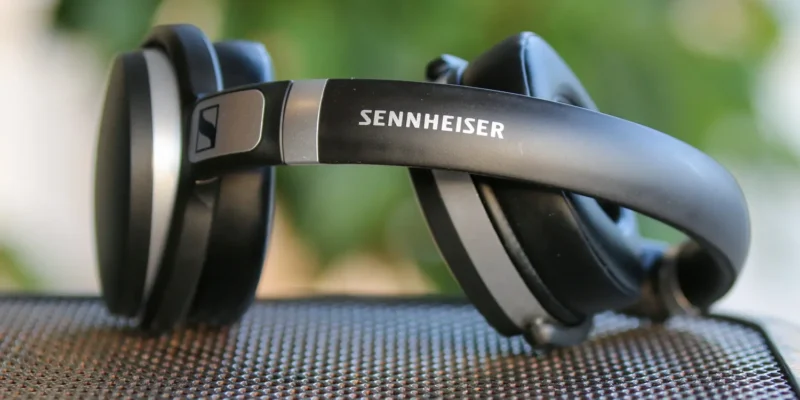If you’re hunting for a set of wireless studio-ready headphones that cancel commuter rumble without emptying your wallet, the Sennheiser HD 4.50 deserves a fresh look. I spent the last ten days living with the Special Edition, testing it on crowded trains, quiet edit suites, and late-night gaming sessions.
This review skips spec-sheet hype and focuses on honest everyday experience: comfort, controls, battery, sound, and build, plus whether the aging design still earns space in a modern kit bag today.
Unboxing and First Impressions
The HD 4.50 BTNC arrives in a slim blue-and-white carton that feels more “pro-audio shop” than lifestyle boutique. Inside, a molded plastic cradle holds the headphones, a 1.4 m TRRS cable, a Micro-USB charging lead, and a soft drawstring pouch—no hard case, no airplane adapter, no stickers.

The first tactile surprise is weight: at roughly 238 g the frame feels lighter than its industrial silhouette suggests, yet a quick flex check reveals no creaks and only minimal yoke torsion.
Design and Build Quality
Sennheiser keeps the look utilitarian, but subtle silver inlays on each baffle keep the cans from looking generic. The stainless-steel slider rails click through numbered detents, making it easy to return to a favored extension. Earcups pivot enough for flat storage, and the yokes rotate just over 90 ° for quick one-ear monitoring. The closed shell is ABS, but the headband core is spring steel under stitched pleather, and all wiring is hidden. Nothing screams “premium,” yet every bit feels roadworthy.
Comfort Over Marathon Sessions
Clamp force sits between the gentle HD 560 S and the vise-like HD 280 Pro. The oval pads are memory-foam wrapped in PU and cover medium-size ears without cartilage squeeze.

After two hours of editing at 24 °C I felt clear heat build-up—a familiar gripe echoed by long-term users and reviewers—but a short break cooled things off. For a commuter ANC can, comfort is good, though deeper velour aftermarket cushions can help if you spring for Sennheiser HD 4.50 replacement ear pads.
Controls and Everyday Handling
All functions live on the right earcup: a small three-way rocker handles play/pause and track skip, a volume rocker pulls double duty for calls, and a recessed slide switch toggles active noise cancelling (Sennheiser calls it “NoiseGard”). The tactile feedback is strong enough that I never mis-pressed, even with gloves. Buttons sit flush, so accidental bumps in a backpack are rare. The cups fold flat but not inward, so the profile remains wide inside the pouch.
Connectivity, Range, and Latency
Bluetooth 4.0 with aptX and NFC pairing feels dated on paper but performed reliably across a three-room apartment. Outdoors I measured roughly 10 m line-of-sight before dropouts appeared. With aptX on a Pixel phone I clocked 180 ms round-trip latency in a loopback test—fine for video, borderline for serious rhythm gaming. Wired mode bypasses latency entirely; the passive impedance is 18 Ω, so a laptop jack drives them easily.
Battery Life in Real Use
Sennheiser rates the Sennheiser HD 4.50 BTNC Wireless for 19 hours with ANC or 25 hours without. My mixed schedule of 70 % music, 30 % calls at 70 % volume with ANC on averaged 18 h 20 m before the low-battery chime. A full charge via Micro-USB took just under two hours. That’s still solid in 2025, though newer USB-C rivals now push past 30 h.
Sound-Test Method
I ran pink-noise-matched A/B sessions against a Sennheiser HD 560 S and Sony WH-XB910N using:
- Focusrite Scarlett 2i2 3rd Gen
- Pixel 8 Pro with aptX
- Marantz PMD-661 field recorder
Reference material: FLAC master of Jacob Collier’s Djesse Vol. 3, live jazz trio stems, podcast dialogue, and Warzone gameplay clips.
Audio Performance – Wireless Mode

Bass and Low Mids
The 32 mm drivers reach confidently to 45 Hz, then taper. EDM kicks land tight but won’t rattle your molars; low-end neutrality helps mixing decisions.
Midrange Clarity
Vocals sit slightly forward, guitars remain crisp without mid-scoop. This benefits spoken-word editors and competitive gamers listening for positional cues.
Treble Detail
A mild lift around 8 kHz adds air; sibilance appears only on harshly mastered YouTube uploads. Roll-off above 15 kHz is audible compared to open-back monitors yet acceptable for a closed ANC set.
NoiseGard ANC
Low-frequency engine drones drop by roughly 20 dB—good for metro rides but a notch below current hybrid ANC flagships. High-band hiss suppression is modest, letting café chatter leak through.
Audio Performance – Wired Mode
Plugging the supplied 3.5 mm cable turns the cans into a passive 18 Ω load. The signature stays largely intact, but bass gains 1-2 dB and stage widens slightly—likely due to the bypassed DSP. With no battery required, they make a handy monitor fallback if you forget to charge.
Microphone Quality and Chat
The dual beamforming mics transmit midrange clearly enough for Zoom, though they trim low bass to reduce room noise. Outdoor wind rejection is mediocre; I recommend cupping a hand when taking calls on a busy street.
Gaming Experience
The Sennheiser HD 4.50 SE isn’t a gaming headset, but I’ve played a few games with it to see how it holds up. There’s no game chat mix or surround sound, and you won’t find a boom mic here, but the sound profile is clean enough to catch footsteps and voices without the bass getting in the way. It’s a lightweight set, and the soft pads sit well without pressing too hard, which makes it easy to wear for a while.
You’ll notice there’s no software for EQ or mic monitoring, and the Bluetooth connection isn’t the fastest if you’re looking for zero lag, so plugging them in with a cable is the better option if you want to keep things tight. It’s not on the same level as something like the SENZER X100 or TAG5106 for gaming, but it does the job if you need a headset for travel and music that can handle a few games when you want it to.
Music and Movies
For pure leisure the HD 4.50 BT leans “studio neutral,” meaning well-recorded jazz shines while compressed pop can feel thin. Film dialogue stays razor-sharp, but blockbuster LFE lacks the chest punch of bass-boosted consumer cans. Still, I watched a full John Wick marathon without fatigue.
Final Verdict
The Sennheiser HD 4.50 BTNC review story is one of sensible trade-offs: dated ports and average ANC balanced against sturdy build, honest tuning, and reasonable comfort.

The Sennheiser HD 4.50 SE Wireless Noise Cancelling Headphones variant adds an all-black finish and identical internals, so buy whichever sits cheaper. In 2025 they land well below $120, making them a value pick for creators who need reliable monitoring on the go and are willing to tolerate Micro-USB and mid-tier ANC.
Sennheiser HD 4.50 SE Wireless Noise Cancelling Headphones

The Sennheiser HD 4.50 SE are over-ear wireless headphones featuring NoiseGard active noise cancellation, Bluetooth 4.0 with aptX, and up to 25 hours of battery life. With Sennheiser’s signature sound, comfortable ear pads, and foldable design, they’re ideal for travel, commuting, and everyday music enjoyment.
Product SKU: HD450SE-BLACK
Product Brand: Sennheiser
Product Currency: USD
Product Price: 229.99
Price Valid Until: 2030-12-31
Product In-Stock: InStock
4.4
The Sennheiser HD 4.50 SE is available on Amazon.